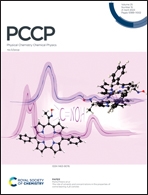Ultraviolet-ozone concomitantly induced MoS2/MoOx heterostructures with improved SERS performance
Abstract
Surface-enhanced Raman scattering (SERS) is a non-destructive spectral analysis technique. It has the virtues of high detectivity and sensitivity, which have been extensively studied for low-trace molecule detection. In the choices of SERS substrate materials, low-cost and abundant reserved transition metal oxide/chalcogenide materials have been regarded as promising substitutes for noble metals; however, their inferior SERS enhancement severely limits their practical application. Herein, a class of MoS2/MoOx heterostructures have been demonstrated with significantly improved SERS performance. Experimentally, MoS2/MoOx heterostructures were prepared by precisely controlled oxidation of MoS2 nanospheres in an ultraviolet–ozone environment, and the optimal SERS substrate was obtained with 14 hours of ultraviolet-ozone irradiation. SERS measurements revealed superior SERS performance with a detection limit of 10−7 M (rhodamine 6G) and an enhancement factor of 7.477 × 106 (R6G@10−7 M) could be obtained. Finally, the intuitive SERS enhancement mechanism was investigated via energy band analysis. It revealed that the constructed heterostructures enhanced the electron–hole separation, and the electrons were successively transferred to the analytes and significantly promoted the molecular polarizability, improving the SERS performance.



 Please wait while we load your content...
Please wait while we load your content...